Continuing with our Flower Power series….
Saskatoons
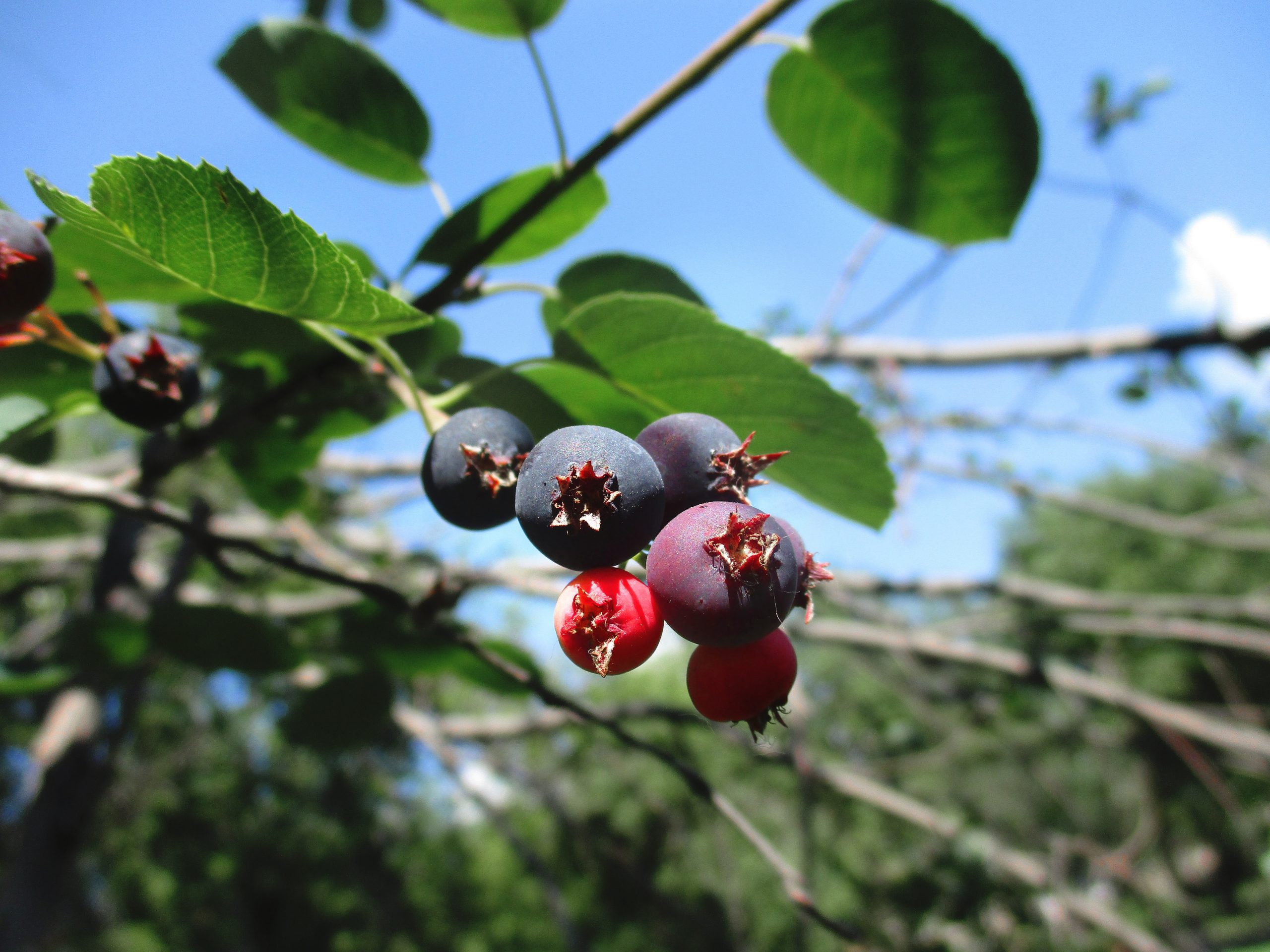
Saskatoons are deciduous shrubs who are members of the rose family (Rosaceae). The rose family is a very large one and includes, besides roses, apples, plums and cherries. In the spring, Saskatoons (Amelanchier alnifolia)have soft green oval-shaped leaves with clusters of delicate white flowers. In the summer the flowers transform from green to red to delicious deep-purple berries which love full sun in which to ripen.
Growing mostly in thickets, these shrubs range from 3 to 26 feet high. Saskatoons are relatively slow-growing, long-lived and found in a number of different conditions, except very wet areas as they prefer soil that is on the drier side. It is worth remarking that the prairie ecosystem from which the Saskatoon evolved began at least 16,000 years ago (when the glaciers began to retreat). Their evolution occurred during grueling hot summers and frigid winters (punctuated by fires and floods), rendering the spectacular hardiness and resilience Saskatoons are known for.
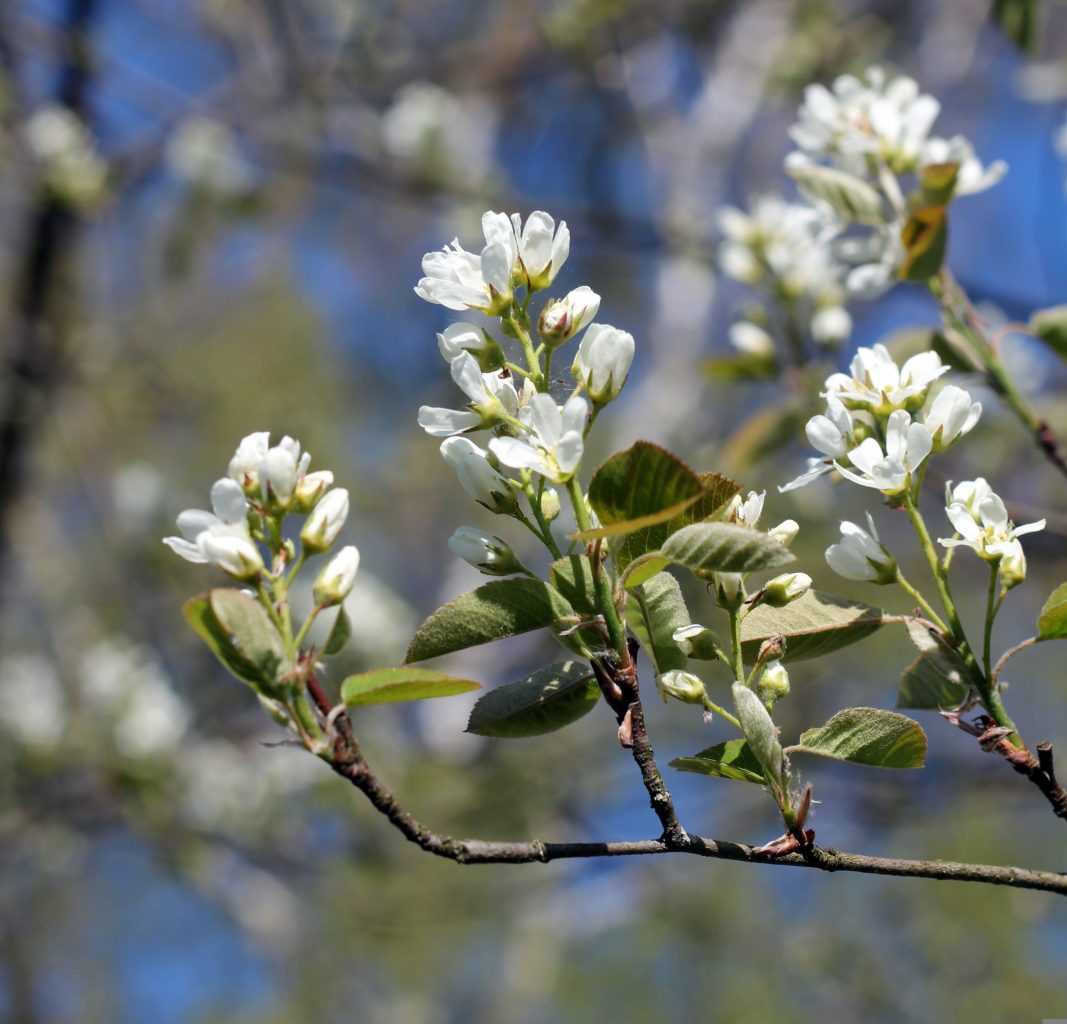
It is interesting that an important component of indigenous land management involved the practice of controlled burns. The intense fires killed the above-ground portions of these shrubs which actually allowed for the root system to sprout with more vigor, increasing the density and productivity of the shrub.
The Saskatoon is an understory tree, making it fortunate that their beautiful 5-petaled white flowers tend to appear early. This gives them the advantage of being able to take in the sun before the leaves form on the overstory trees, throwing them into shade.
The wood of the Saskatoon is fine-grained, heavy and strong. Those who specialize in carving spoons especially favor this wood because, as added bonus to the durability, the colors of the wood are gorgeous, ranging from lighter shades to dark reddish brown. Indigenous populations have a long history of utilizing Saskatoon wood as it was so well suited for arrow shafts and pipestems.
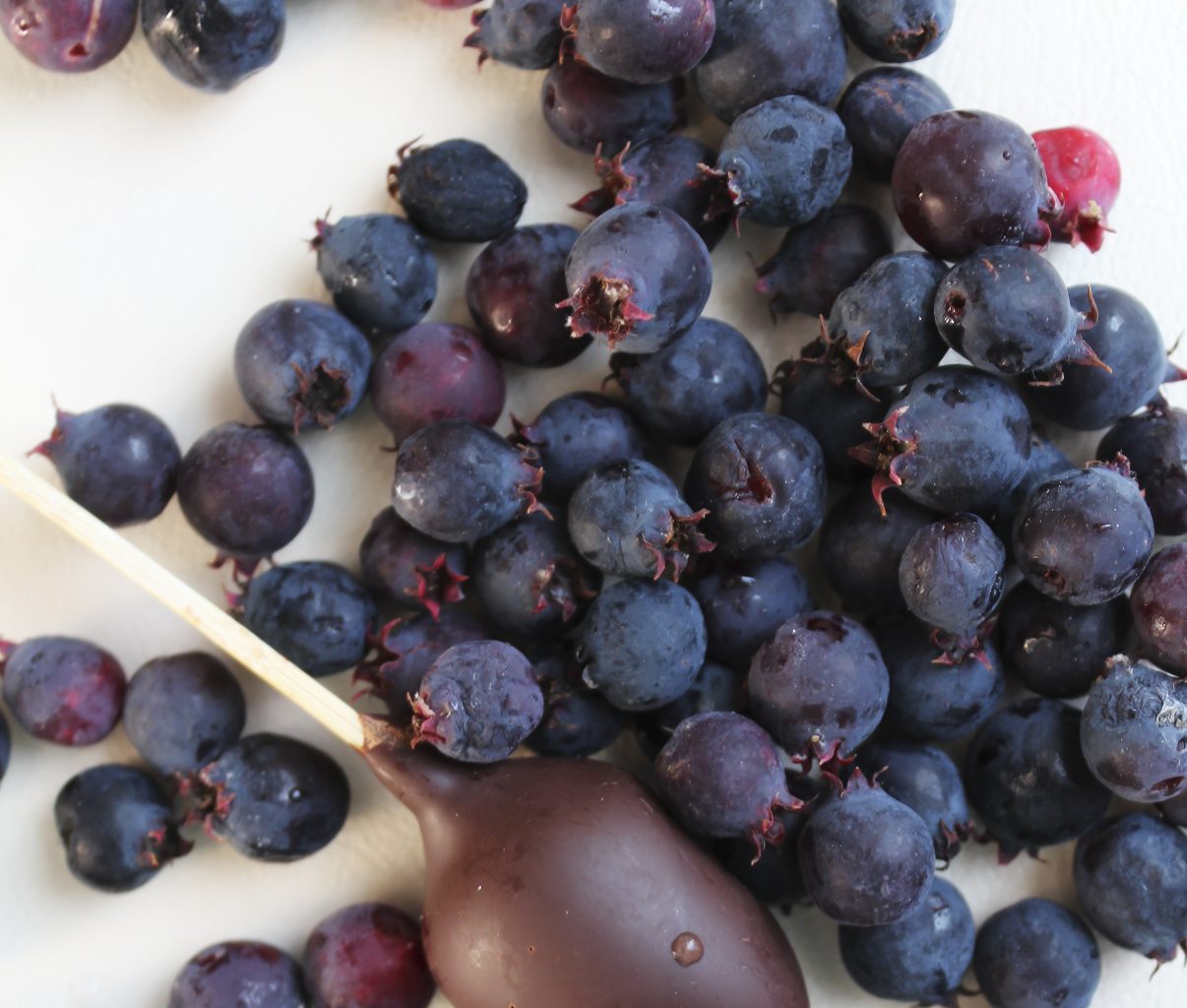
Other names for Saskatoon are Juneberry, Serviceberry, Shadberry, Sugar Pear and India Pear, among others. The reason it was called Shadberry is because in colonial times the blossoming of its flowers was a signal to the fishermen the shad fish were spawning.
The most commonly used name, Saskatoon, is derived from a noun of the Cree language: misâskwatômina, or “mis-ask-quah-toomina (saskatoonberry). The city of Saskatoon in Saskatchewan, Canada was named after this shrub. Pemmican is a well-known as a preserved food which was used by the Indigenous peoples. The Saskatoon fruit was mixed with dried buffalo meat and fat (sometimes called Pemmican) and was especially important for the hunters during long trips.
In Canada, Saskatoons are prevalent in the prairie provinces. Saskatchewan in particular has the bulk of the modern commercial orchards, Saskatoon berry production is second only to strawberries. It has also been noted in one historical reference that in northern British Columbia and the Canadian prairies “This was, quite literally, the only fruit that many families knew during the period of the Depression” (referring to the 1930’s).
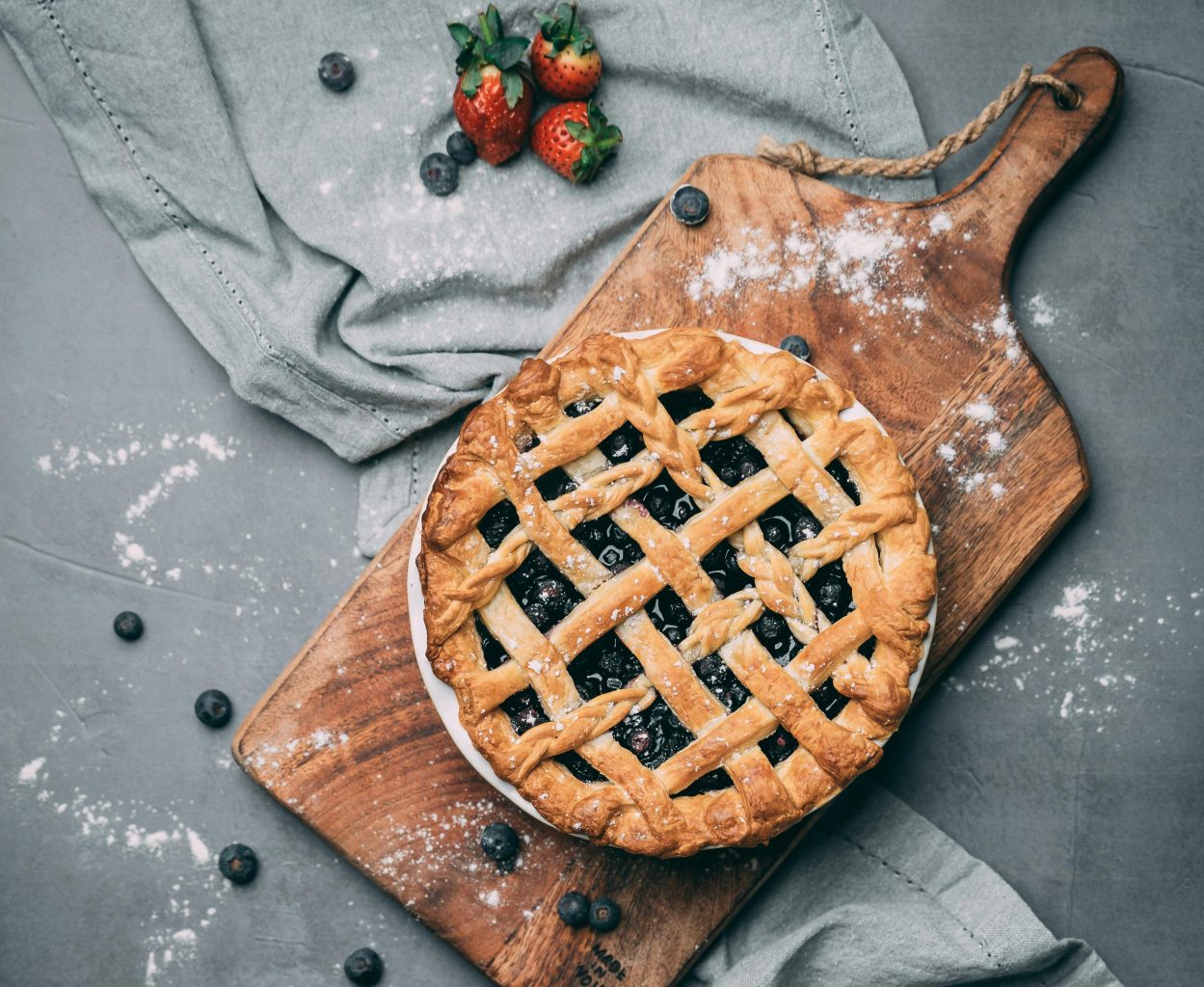
Although we call the fruit of the Saskatoon a berry, it is actually a pome fruit just like apples. Saskatoon fruits are delicious when they are fresh, described as “earthy, nutty or with a slight almond taste”. One writer commented that cooking transforms them to a deeper and richer flavor.
As a traditional major source of food, Indigenous peoples pounded the berries into a thick paste which they spread on mats, allowing it to slowly dry into a form which could be stored over the winter, consumed as is or mixed with other foods or bear fat. These days Saskatoon berries are preserved by freezing. They can last up to 12 months in deep freeze if properly stored.
There are myriad ways to enjoy these berries: jams, jellies, wines, desserts, pies, liqueurs or paired with savory foods. There are many recipes using Saskatoons. One recipe in particular seems to be the modern version of the traditional pounded and dried version vital to Indigenous people of the past. It is called “fruit leather”. One recipe uses a blender, dehydrator and a little maple syrup for preservation, flavor and added water content. After heating, then blending the berries to a thick puree, the paste is spread on baking sheets. The dehydration lasts about 8 hours at 135 degrees until the fruit leather is slightly pliable with visible chunks of seeds. The author said the seeds in the Saskatoons add a crunch that is similar to sesame seeds, adding texture to the rich, jammy flavor.
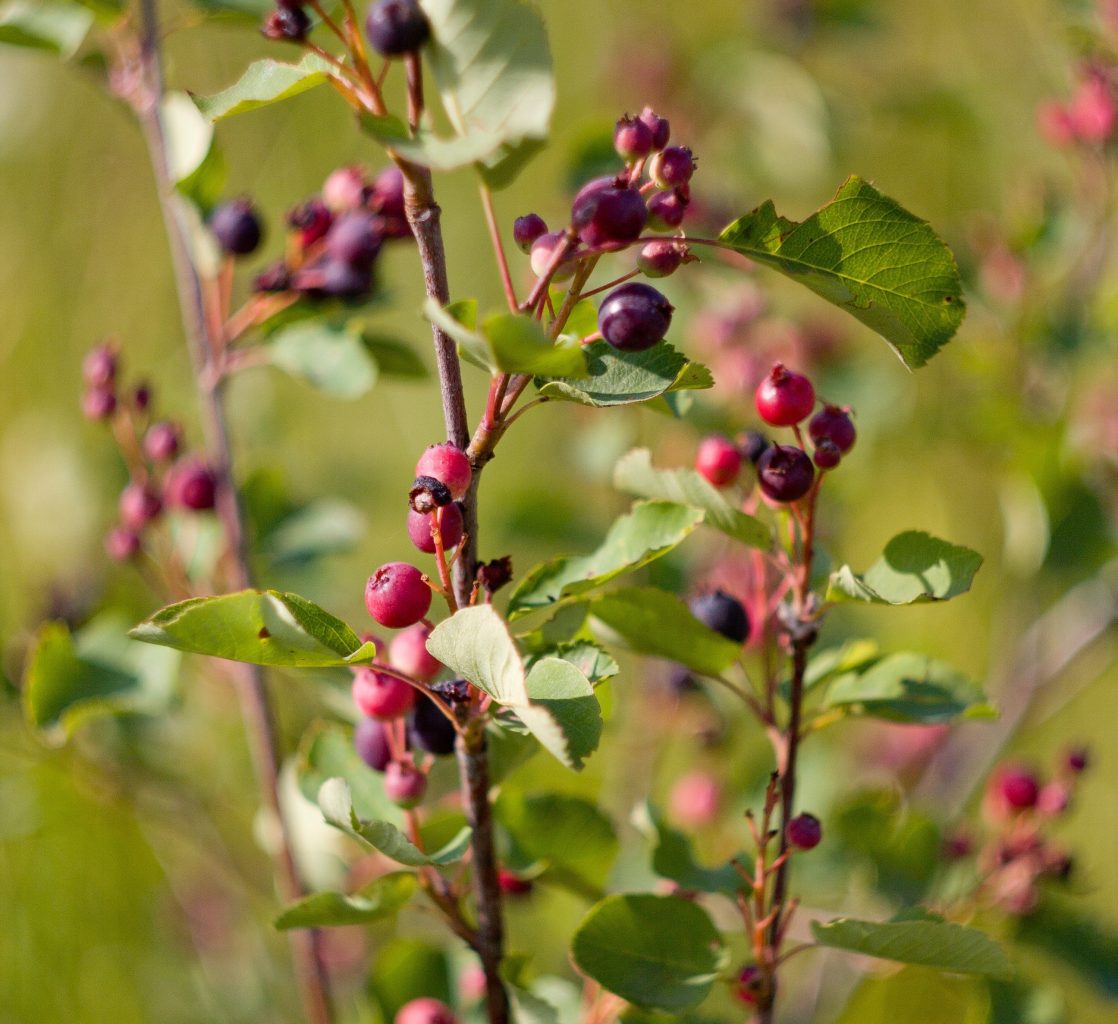
The nutritional profile of the Saskatoon fruit is similar to blueberries and blueberries are one of the healthiest fruits we have. Saskatoon berries are a rich source of vital nutrients such as iron, calcium, manganese, copper, potassium, Vitamin C and many more.
The Blackfoot Tribes of North America utilized Saskatoons in the treatment and prevention of diabetes. The juice was used to soothe the stomach and provide a gentle laxative. A number of historical references show Saskatoon’s medical attributes being tied to women’s health, particularly surrounding pregnancy. The Ojibwe used the bark for expectant mothers while the Iroquois used the fruit to assist with post-birth pain and bleeding.
Modern research, although rather slow-moving, shows Saskatoons contain important antioxidant constituents and there is exploration of the promising potential for use of the anti-inflammatory, anticarcinogenic and antidiabetic properties.
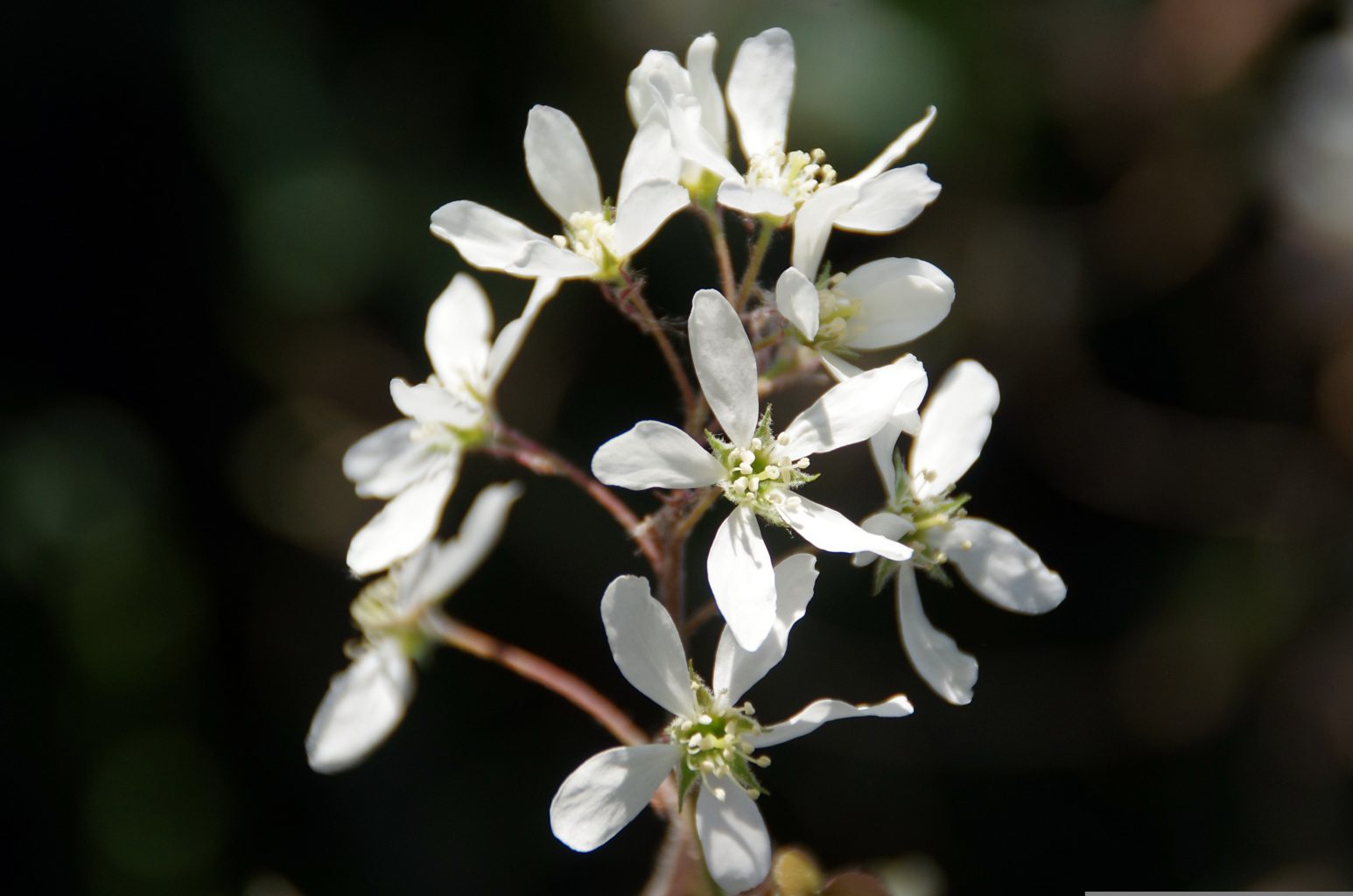
As previously mentioned, Saskatoons have many names, especially outside of Canada. They are known as Juneberries in the U.S., selling much better when called Juneberry than Saskatoonberry. Just for fun, the following story circulated several years ago:
“A Saskatchewan farmer and his wife were at an airport in Arizona awaiting their flight, heading back home in mid-January. They were dressed in heavy boots and carrying parkas, scarves, mittens … all set to head home to the Canadian winter.
An older American couple standing nearby were intrigued by their manner of dress. The wife wondered out loud where they were from. Her husband was not really interested but said, “Go ask them”. She decided to do just that, walked over and said, “Excuse me. From the way you are dressed, I wondered where you are from?”
The Canadian farmer replied, “Saskatoon, Saskatchewan”. The woman, after offering a little smile, quickly walked back to her husband. He asked, “So, where are they from?” She replied, “I don’t know. They don’t speak English.”
Around 2004 the European Union decided to ban Saskatoon berries because they were a “novel food” and needed to be subjected to lengthy government testing. There ensued a period of arguments back and forth until the ban was gradually lifted. It is notable that in 2016, a CBC news article was titled, “Saskatoon berries used in a dish at Gordon Ramsay’s London café”. The article outlines a rather close call as to whether the Chef at this famous café would accept the Saskatoonberry onto their menu – to him the taste was so unfamiliar. Ultimately the decision was made to include Saskatoons in two of their dishes.
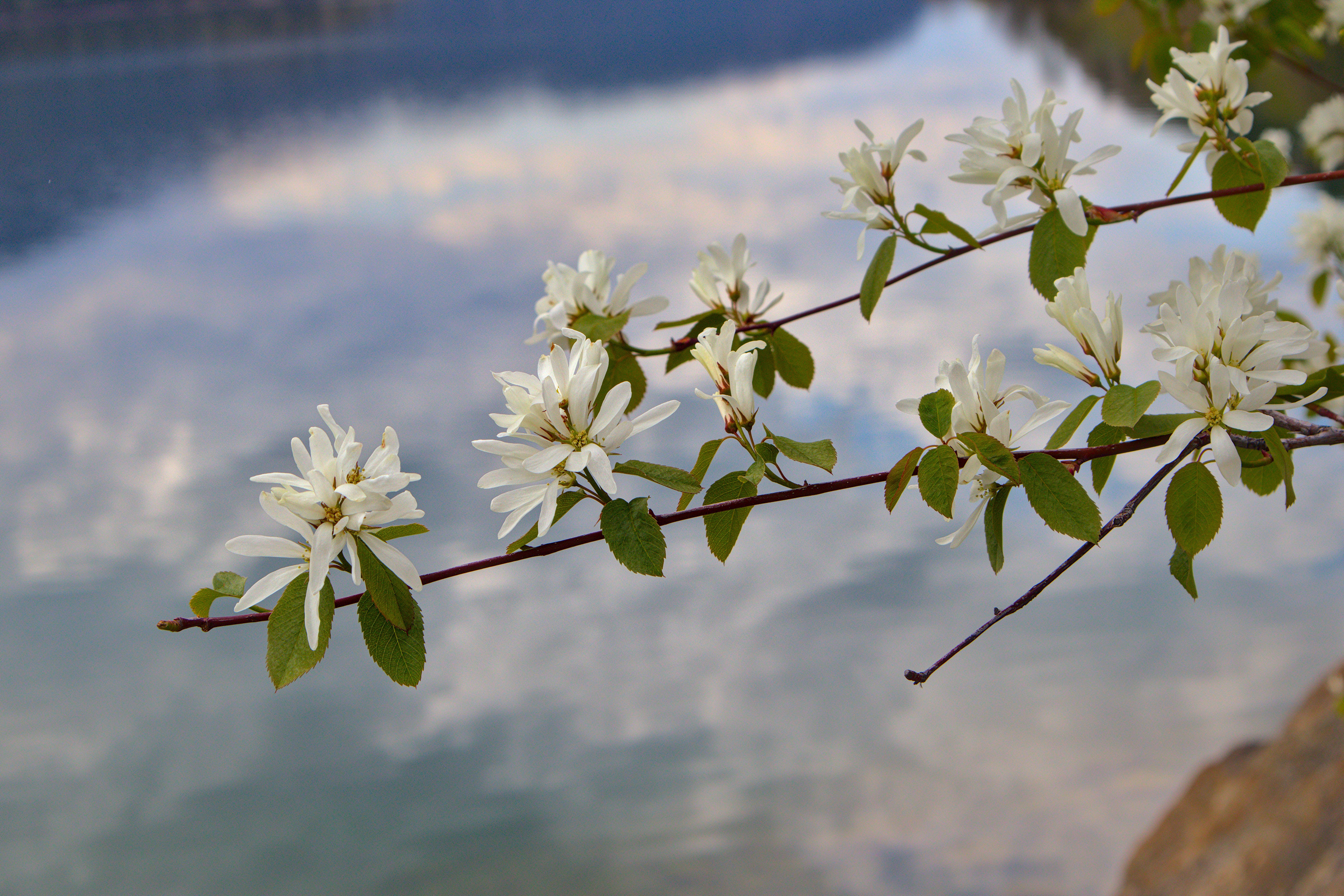
she considers blue beads as holding a piece of the sky
reflected in berries
her same fingers gather saskatoons …
Marilyn Dumont
